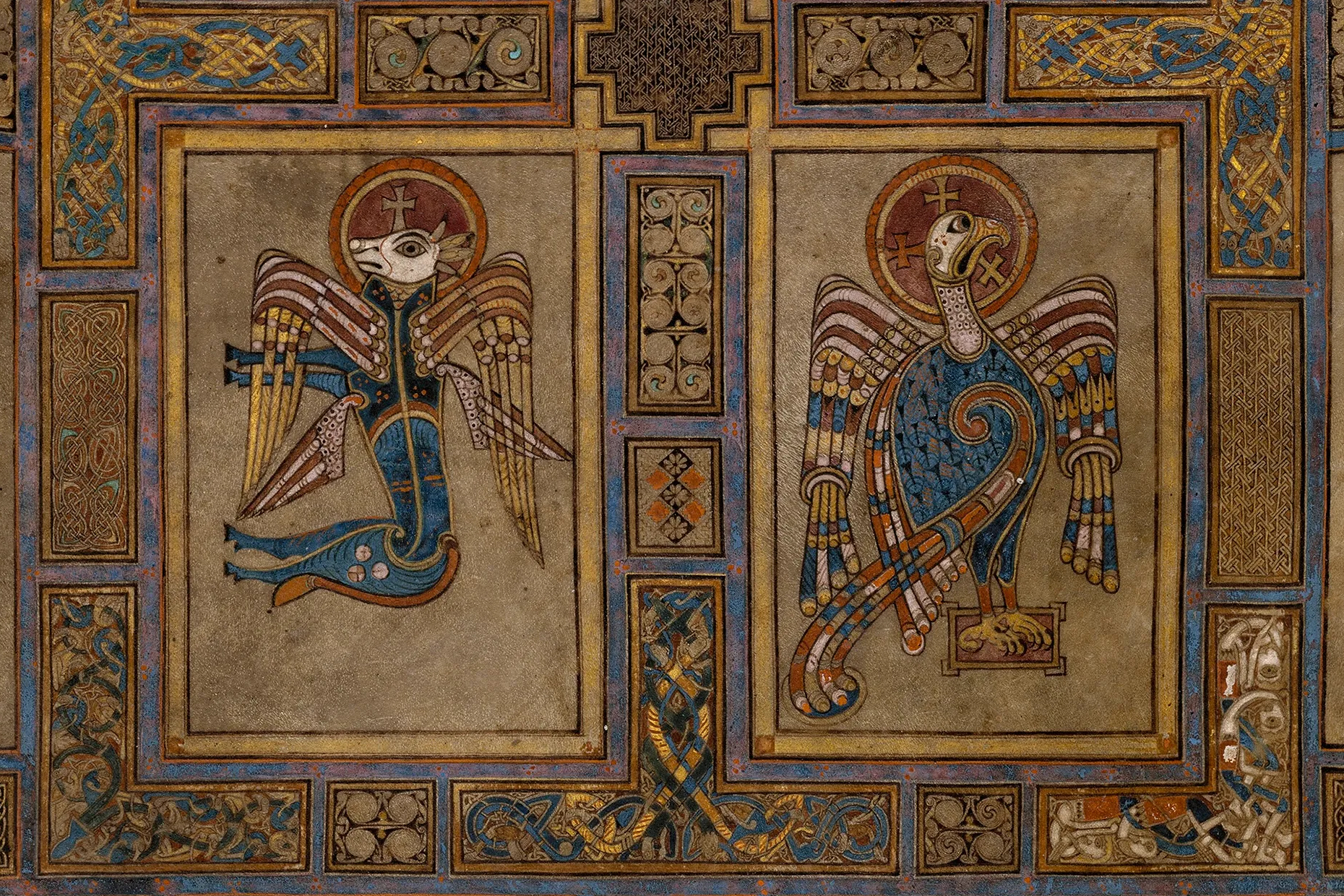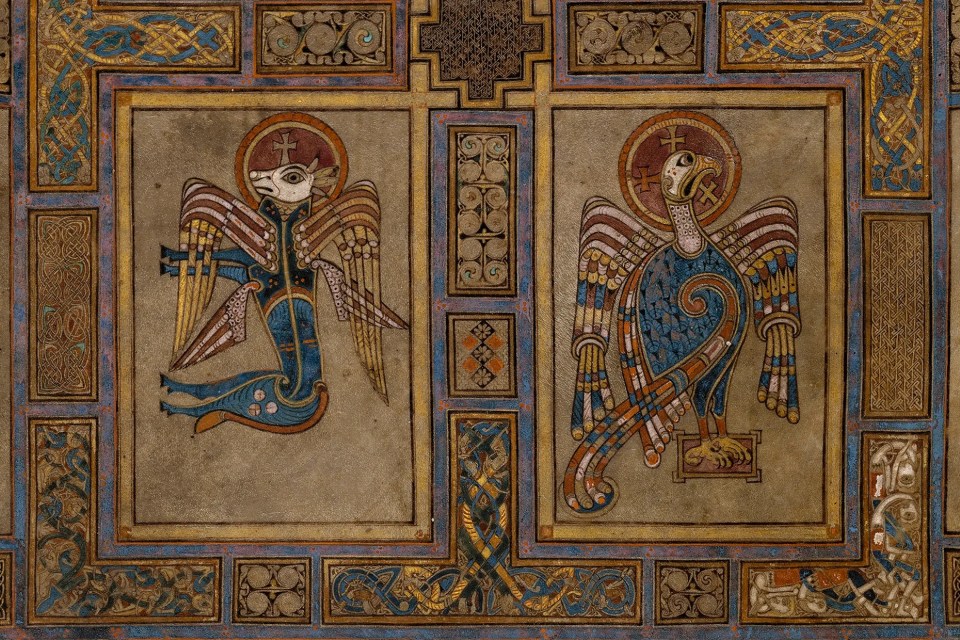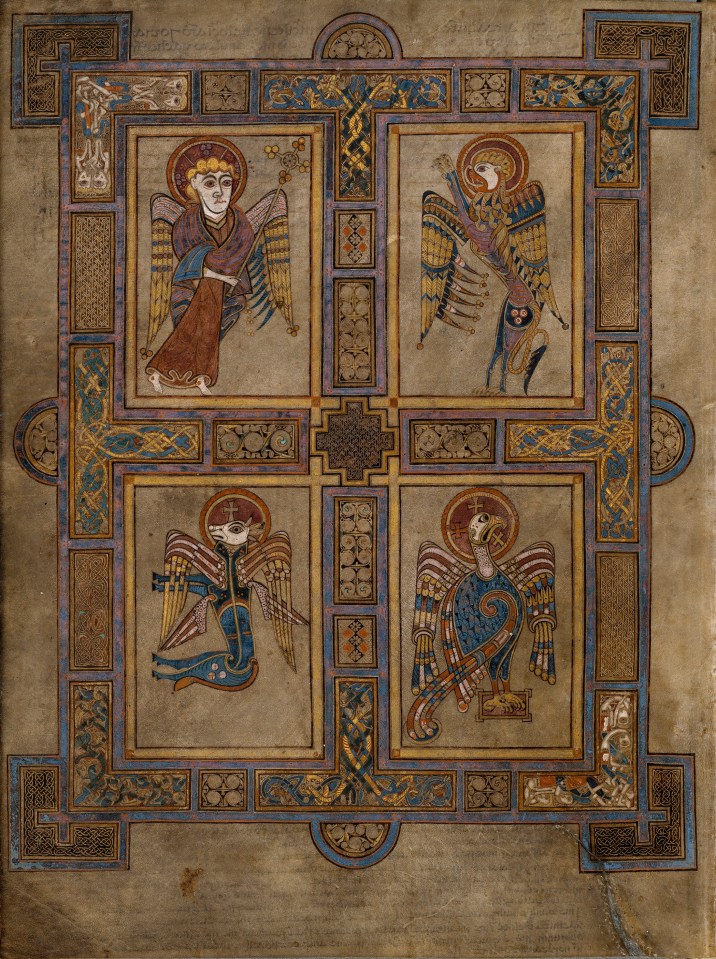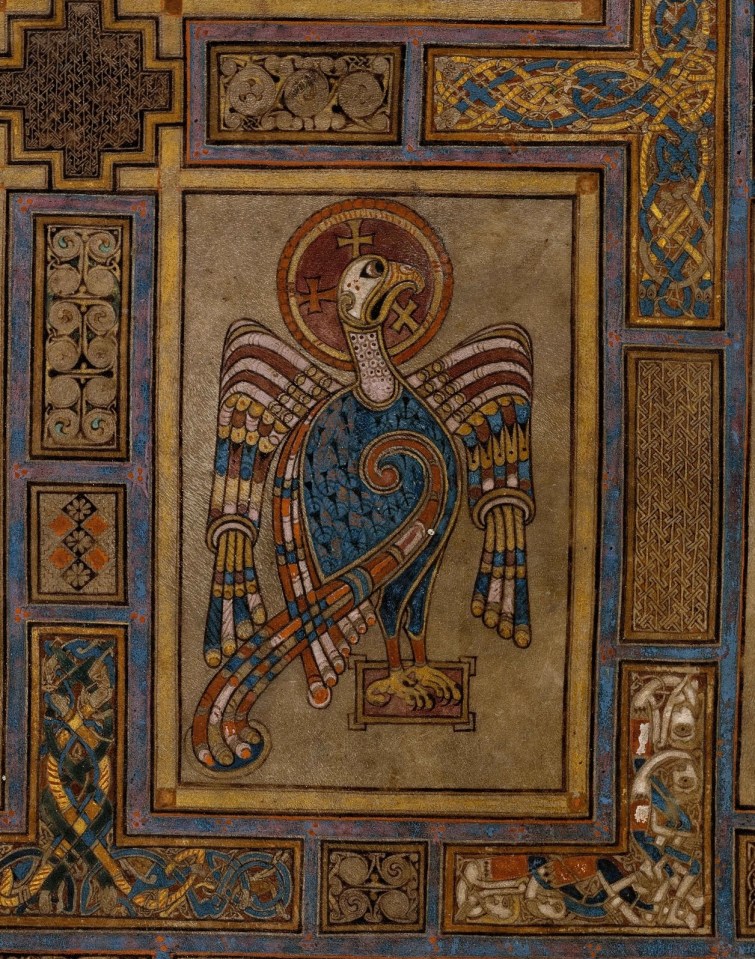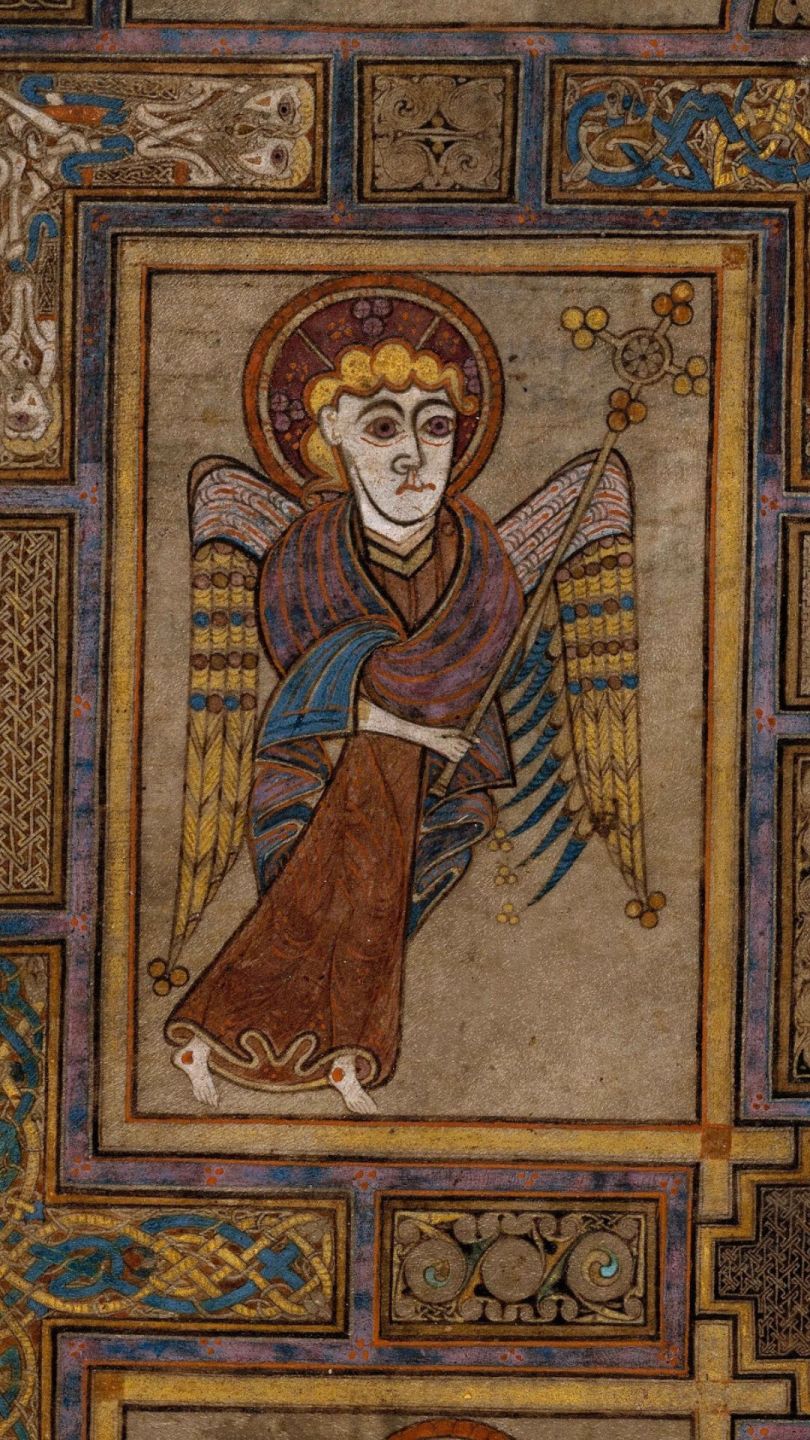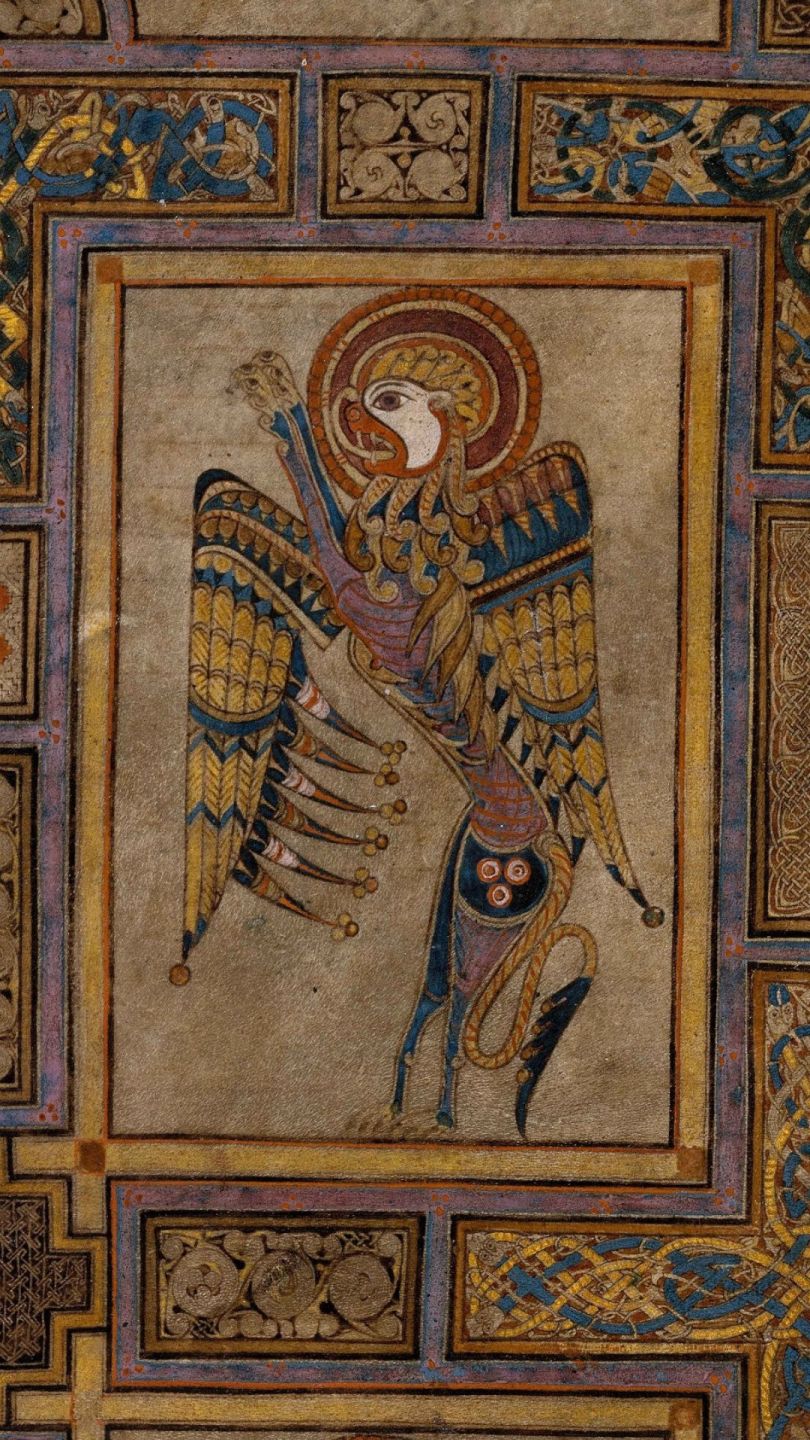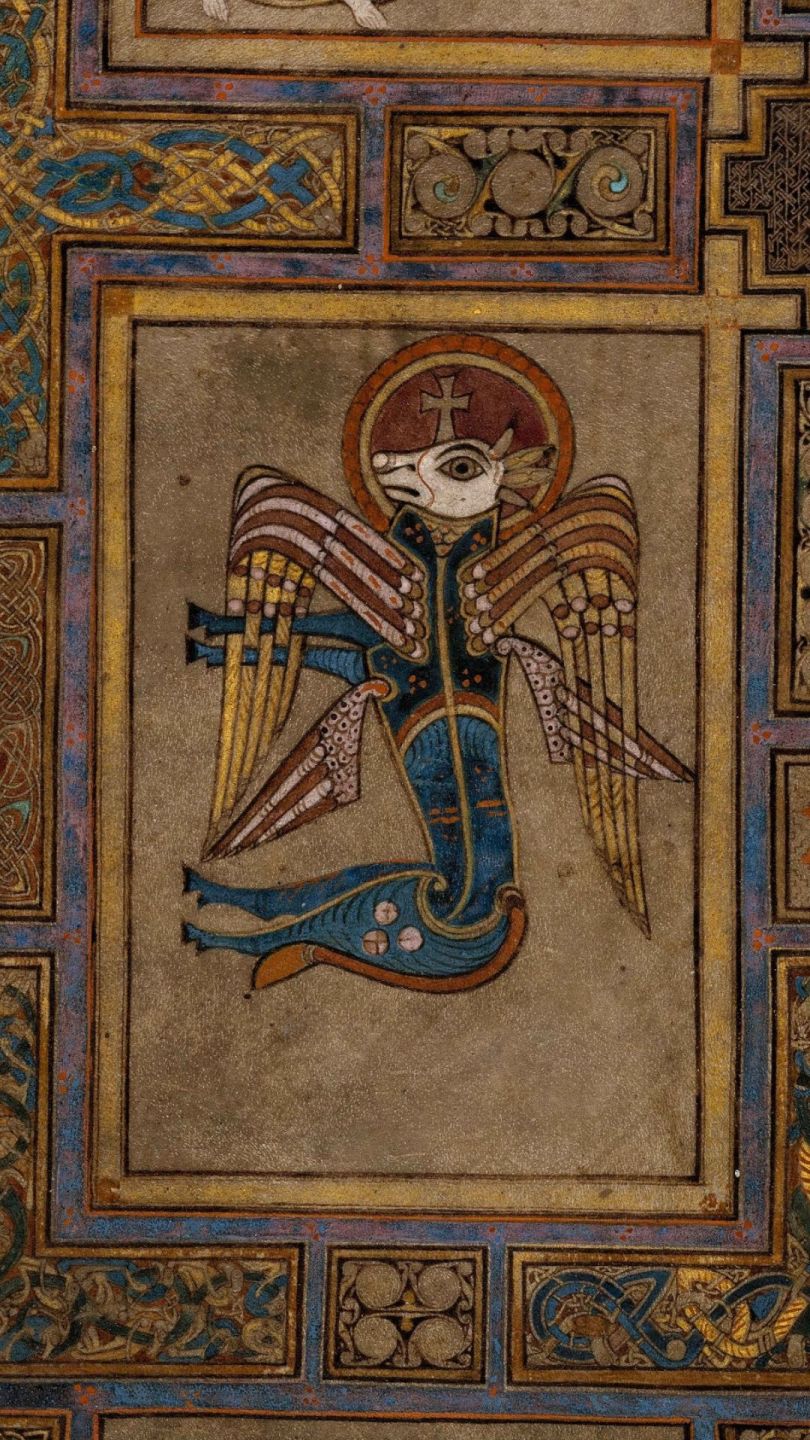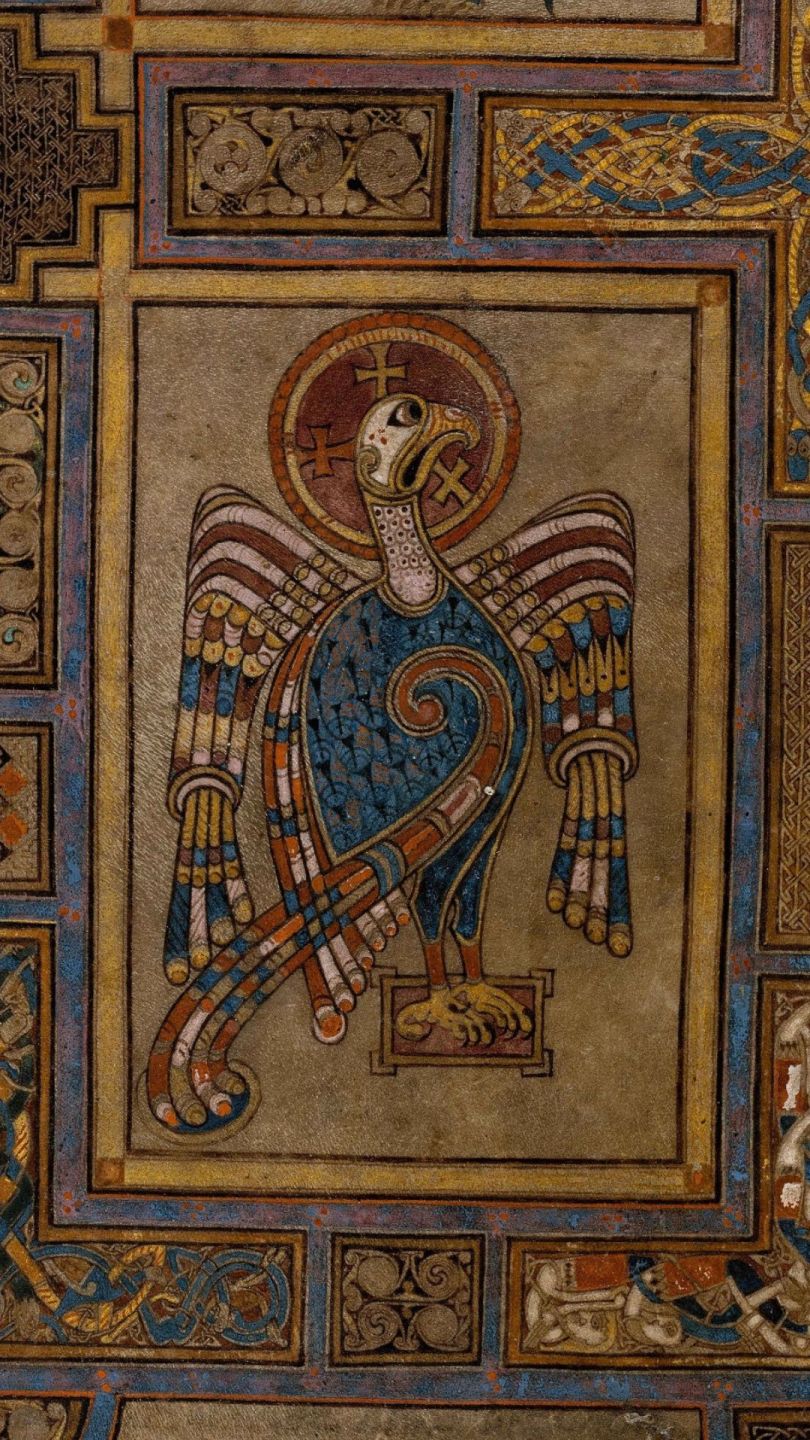
The decorative plan for the Book of Kells appears to have been that each Gospel opened with a page of Evangelists symbols, a portrait page depicting the Evangelist, and an elaboration of the opening words or letters. It was common scriptorium practice for pages of major decoration to be painted on single leaves, so that the Gospel text could be copied at a faster pace, but single leaves are particularly vulnerable to the breakdown of bindings, resulting in misplacement or loss. The appearance of certain openings today is not as originally intended and it is almost certain that folio 28r was not meant to be blank.
The Evangelist symbols prefacing St Matthew’s Gospel on folio 27v depict the man of Matthew, the lion of Mark, the calf of Luke and the eagle of John. This dates back to the sixth century when Gregory the Great interpreted the Evangelist symbols as the four stages of Christ’s life: Christ was a man when he was born, a calf in his death, a lion in his resurrection and an eagle in his ascension to heaven. Here they are all shown to have haloes and wings, a double set in the case of the calf. The symbol of Matthew holds a flabellum (a liturgical fan), and the eagle clutches his gospel book in his talons.
